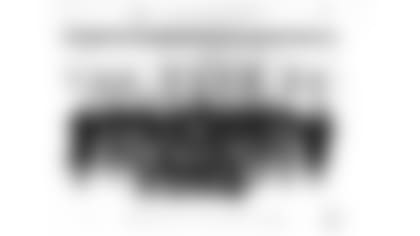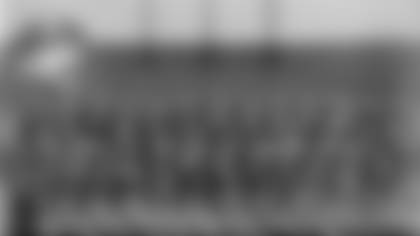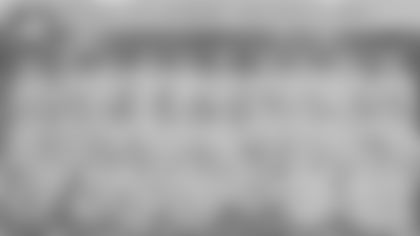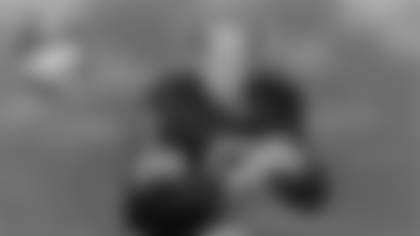Corey from Green Bay
So that iconic 1919 team photo was taken right at the loading dock of the Indian/Acme Packing Co.?
No. It was taken in front of the Indian Packing plant garage. Also, it was taken on Dec. 7, 1919, more than a year before Acme's brief dalliance with the Packers.
You perhaps read that on page 100 of the book, "Green Bay: A City and Its Team." The caption under the team photo read: "The 1919 Indian Packing Plant team in front of the loading docks at the plant." That's the only place where I've read that, and the caption is incorrect.
The two original packing plant buildings still stand – on the south side of Morrow Street between Elizabeth and Henry streets – and that's where the loading docks were located as you can see on the picture at the beginning of this post. Those buildings are on the Packers Heritage Trail and can still be seen from Morrow Street, although the views aren't what they once were because of a large concrete addition in front of one building and other mostly cosmetic changes.
On the other hand, the garage (pictured above in the lower right corner) is no longer there, nor is the office building (pictured in the inset). Based on my research, the office building was actually constructed before the garage, so I'm not sure why it was superimposed on the photo. Maybe it had something to do with its location closer to the street and the focal length of the lens that was used. Whatever, on the 1919 team picture (below), the numbered garage doors serve as the background.

With the help of Mary Jane Herber, head of the local history department at the Brown County Library, we were able to determine that the two buildings were both razed between 1967 and 1978.
That's based on the Sanborn Fire Insurance Maps of Green Bay, which date back to 1917 and show all of the buildings in the city, as well as certain adjoining ones, with color codes that reveal the materials with which they were constructed, their dimensions, how many stories they were, etc.
The packing plant's two original, large warehouses were on the 1917 Sanborn map. The office also was built around the same time, according to Green Bay Press-Gazette stories from that year. The garage was built before the end of 1919. Both buildings also were still there on the 1967 Official GIS map of Brown County, the aerial views that can be found online by Googling BrownDog. In 1970, the office was still in place on the Sanborn map, but the garage was no longer there. Then in the 1978 aerial, both buildings were gone.
"Green Bay: A City and Its Team," also had a picture on page 109, stating the Packers had practiced at the southwest corner of Morrow and Henry, next to the plant. That, too, was incorrect. Their first practice field in 1919 was located to the west of the plant in the direction of Elizabeth Street.
Besides being able to view the packing plant buildings on a Packers Heritage Trail Trolley Tour, one could walk there or bike there on a blacktop trail from just north of City Stadium, which is adjacent to Green Bay East High School. The Indian/Acme Packing Plant buildings were part of the original Packing Plant Spur of the Heritage Trail, along with the team's early practice fields, the Riverside Ballroom and the area where Bellevue Park, home to the Packers from 1923-24, was located. The Heritage Trail plaque for the packing plant is located near the intersection of Main and Elizabeth streets, where the Kress Trail section starts along the Baird Creek Greenway.
John from Sioux Falls, SD
I so admire your work in keeping the flame of Packer history burning so brightly. My question is: Has anyone ever played for all four NFC North teams in the course of their career? It seems like so many guys seem to bounce around in the division, it made me wonder if anybody "hit for the cycle" so to speak.
Appreciate your interest in Packers history and for your intriguing question. You've stumped me and piqued my curiosity at the same time. Tom Fanning, Packers assistant director of communications, checked with Elias Sports Bureau and the answer is no. But Elias' records show that there have been 17 players since 1933 that have played for three of the four.
Minnesota didn't come into existence until 1961, so there's no chance of someone having played with all four pre-1933. It's possible there could be more than 17 that have played for three because the Detroit franchise dates to 1930, which includes the years it was based in Portsmouth.
Only two names even came to mind when I read your question: Tim Boyle, backup quarterback for the Packers in 2019-20, the Lions in 2021 and the Bears in 2022; and Aldo Forte, a lineman who played for the Bears, Lions and Packers from 1939-47.
Fanning mentioned Jim McMahon and C.J. Wilson. That's two more who played for three. Just scanning my records of pre-Ron Wolf era Packers, I found five others. The first might have been Connie Mack Berry, an end who played three games for Detroit in 1939, one game for the Packers in 1940 and then five years for the Bears, starting in 1942.
The other four were Jack Concannon, quarterback, 1964-75; John Hilton, tight end, 1965-73; Al Randolph, safety, 1966-74; and Jessie Clark, fullback-running back, 1983-90.
Your hunch is probably correct, most if not all of the others were recent, well-traveled players. And as Tom pointed out with tackle Riley Reiff (Lions, Vikings, Bears), several of the others might not have played for the Packers.
Any readers who can add to the list?
Mike from Milwaukee
I seem to recall that one season Dave Hampton had reached the then-stellar 1,000-yard rushing mark only to lose it after being tackled for a loss on his next attempt. I also believe he did not carry anymore that season, as I think it was the final game, and he ended up just short of the mark. Am I incorrect? Incidentally, my friends and I used to call him "Hard Luck" Hampton.
Yes. It happened in 1972, Hampton's first season with Atlanta after being traded by the Packers. He entered the 14th and final game that year needing 70 yards to reach what was then, as you mentioned, a much more select and coveted club: 1,000-yard rushers.
What happened was the Falcons were playing at home against Kansas City and trailing 10-7 going into the fourth quarter. On the first play, Hampton gained five yards. On the second play, he gained one, giving him 1,000 for the season. The game was stopped and he was given the ball.
On third down, quarterback Bob Berry threw an incomplete pass and the Falcons punted. The Chiefs then had the ball for almost three minutes but didn't score. Four plays into the Falcons' next possession, Hampton lost six yards on a pitchout – now leaving him six yards shy of 1,000 – and Berry threw a touchdown pass on the next play for a 14-10 lead. That was followed by a more than seven-minute Chiefs' touchdown drive, putting them ahead, 17-14.
There was 2:14 left when Atlanta took possession at its 20-yard line following a touchback. On second down, Hampton gained one yard and was at 995 at the two-minute warning. But with the ball at their own 21, Berry threw five passes and also took a sack and the Falcons turned the ball over on downs with 1:35 left. From there, the Chiefs ran out the clock.
A year later, Hampton finished with 997 yards. He went into the final game that year needing 87 yards to reach 1,000. At halftime, he had only 26. In the third quarter, Hampton went without a rushing attempt on Atlanta's 12 snaps. In the fourth quarter, the Falcons were determined to make sure Hampton reached the 1,000-yard milestone and fed him the ball 16 times. He gained 56 yards but wound up with only 84 for the game and three short of 1,000.
Finally, in 1975, Hampton got his 1,000 yards – but just barely – at Lambeau Field on the final weekend of the regular season by gaining 61 yards on 14 carries in a 22-14 loss to the 4-10 Packers.
At halftime, it looked like Hampton might fall short again. He had only 27 yards, and his prospects didn't improve much in the third quarter with the Falcons playing from behind and calling his number only twice. Down 22-6 at the start of the fourth quarter, Atlanta quarterback Steve Bartkowski passed on 17 of his team's next 18 plays.
But with 2:53 remaining and still trailing by nine points, the Falcons pulled Bartkowski and put in backup Pat Sullivan. At that point, Hampton needed 28 yards to reach 1,000, and Sullivan handed him the ball on his first three plays. Hampton gained four, 22 and four yards, giving him 1,002.
His last carry came on the first play following the two-minute warning, and this time the Falcons took no chances. Sullivan called three straight pass plays, the last a fourth-down incompletion.
With the Packers, the most yards that Hampton rushed for in three seasons was 365. He flashed big-play potential but mostly as a kickoff returner. In 1969, his rookie year, he finished fifth in the NFL with a 26.5 average, including an 87-yard return for a touchdown. In his third season, he led the league in kickoff return yardage with 1,314, averaging 28.6 per return, including a 90-yard touchdown.
But Hampton was basically the third-string halfback his first two years behind Donny Anderson and Travis Williams. In Hampton's third season, he was No. 2 behind Anderson, but the running game centered around rookie fullback John Brockington.
Two weeks before the 1972 season opener, Dan Devine traded Hampton straight up for offensive lineman Malcom Snider. Devine needed an offensive lineman because he was about to make one of the most boneheaded decisions in Packers history: moving perennial all-pro guard Gale Gillingham to defense.
By then, MacArthur Lane was the Packers' starting halfback. But when Hampton averaged better than eight yards per carry in a limited role in a season-opening victory against Chicago and followed it with a 161-yard rushing effort in his third game with the Falcons, Bears coach Abe Gibron offered this blunt assessment of the trade as he watched film of Snider in preparation for playing the Packers at Lambeau Field in Week 4: "I'd like to get lucky like (Atlanta coach Norm) Van Brocklin and give up a guy who can't play for Dave Hampton."















